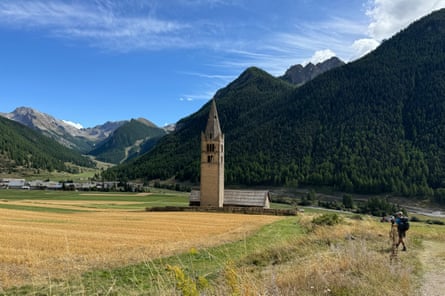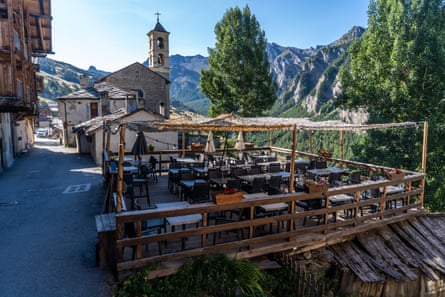Unveiling the Hidden Treasure of Queyras: A Hiking Expedition in the French Alps
On that delightful morning, we relished a warm baguette from the neighborhood bakery, it’s exterior perfectly crisp while its inside was light and fluffy.The cheese accompanying it was a robust, nutty gruyère procured from Pierre’s shop; stumbling upon this fromagerie in the charming hillside village of Rouet was an unexpected delight. After some persistence to rouse the cheesemaker from his slumber behind sturdy farmhouse walls, our efforts were rewarded. as we unwound in a tranquil valley enveloped by pines and meadows, we savored what could only be described as one of the most exquisite sandwiches ever made—comprising just two ingredients (three if you counted the fresh mountain air).
A Journey Defined by Simplicity
This lunch encapsulated simplicity—a fitting representation of our adventure titled “Hiking in the French Alps,” which initially seemed somewhat unexciting but ultimately revealed itself to be refreshingly straightforward. Organized by Macs Adventure, this self-guided trek through Queyras turned out to be anything but mundane.
Queyras: An Overlooked Alpine Haven
Queyras is relatively unknown; I had never encountered it prior to embarking on this journey myself. Tucked between Italy to its north and east and protected by towering peaks exceeding 3,000 meters high, this regional natural park may very well rank among France’s best-kept secrets within the Alps. it gained national attention back in 1957 due to severe flooding that briefly captured headlines; however, tourism has remained modest since then. The area’s enduring agricultural practices and seclusion have preserved its rustic allure.

The Adventure Begins: Accessing Queyras
Reaching Queyras demands some effort; travelers can opt for winding roads through Guil River gorges or tackle high mountain passes like Col d’Izoard (at 2361 meters) or Col Agnel (at 2744 meters), both notorious for challenging cyclists during Tour de France stages and closed during winter months—effectively isolating queyras.
To reduce our carbon footprint while maximizing adventure with Macs Adventure’s collaboration with Byway Travel—experts in sustainable travel—we chose train travel. We spent a night in Paris before heading southward towards montdauphin-Guillestre where a historic Vauban fort overlooks converging valleys. Finally boarding an evening school bus filled with local children accustomed to breathtaking views took us up into Ceillac—the gateway into nature’s playground.
A Six-Day Hiking Odyssey Awaits
The plan was ambitious yet thrilling: six days hiking along circular routes promising rewarding climbs without technical challenges or shared dormitory experiences! Covering approximately twelve miles daily over six hours on average allowed us ample time to explore conventional villages while indulging in local cheeses amidst stunning lakes and mountains—all under sunny skies typical for this region boasting around 300 days of sunshine annually alongside roughly 2500 species of flowers!
The first day commenced with a hike from Ceillac toward Saint-Véran via Col des Estronques (2651 meters). Under clear September skies at season’s end when crocuses still adorned meadows while bilberry bushes began their autumn transformation—it felt like nature itself was preparing for change.

A Day Amidst Nature’s Grandeur
Trekking alongside fellow hikers led us through peaceful farmsteads alive with crickets chirping harmoniously around us until reaching Tête de Jacquette lookout after climbing another hundred vertical meters—a moment where we felt like rulers surveying our mountainous domain! While these peaks may not boast snow-capped summits—they undulate gracefully across landscapes composed primarily limestone dolomite gabbro schist formations creating mesmerizing vistas!
The descent brought us down through lush forests leading directly into Saint-Véran at an elevation exceeding two thousand meters—the claim here being it is indeed Europe’s highest inhabited settlement! This charming locale offers glimpses into traditional alpine life untouched by modernity; among them stands Soum Museum showcasing structures dating back centuries featuring thick stone walls onc used for warmth during harsh winters when families cohabited alongside livestock!
